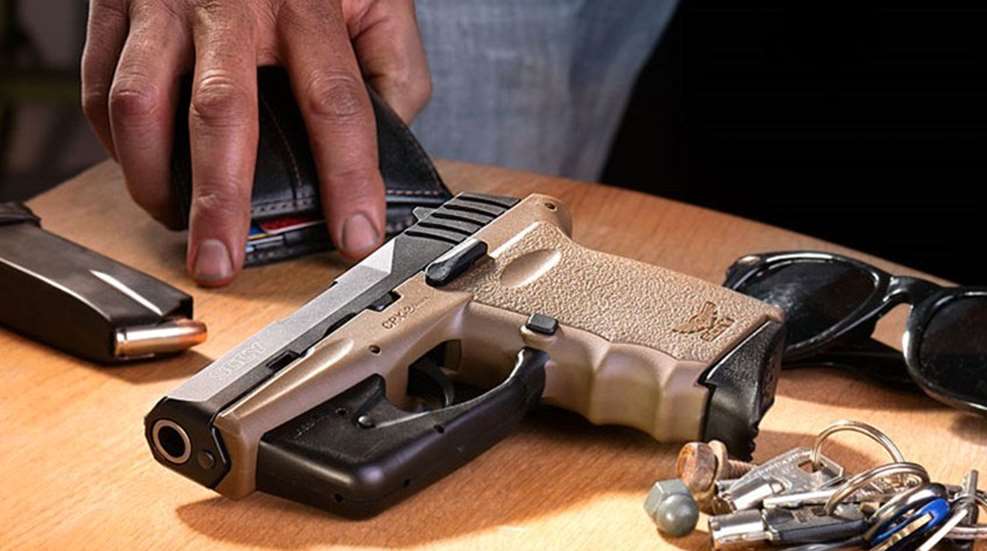
When I consider the question of whether or not one needs to break-in a defensive handgun, I recall an eye-opening moment in a Cabela’s parking lot. I stepped out of my car and my foot landed on an empty clamshell container which once belonged to a budget holster. Right away, I envisioned the horrific scenario that likely led to this reckless litter: A new gun owner purchasing a firearm and a holster nearly blind, and then strapping it on and going about their day. Now I know the readership here at NRA Family knows better than to do that, but why not take a look at a few components in breaking in your concealed carry rig before you hit the streets?
The Pistol
Although not as intensive as rifles, pistols do indeed have a break-in procedure. At a minimum, you should put about 100 rounds through your new handgun, and to do it by firing a series of groups with a cleaning in between each. This will do a number of things to make your shooting experience better down the road. First, it will help condition the barrel for easier clean-up in the future. Those 100 rounds or so will also help rub off any leftover burrs on the feed ramp, increasing overall reliability. Doing this also goes a long way into breaking in the recoil spring as well, making it easier to rack during your day-to-day use. Triggers also get softer and lose their grit as the gun is fired. This will lead to cleaner breaks and better accuracy. Revolvers will see the biggest benefit over time, but your semi-autos will clean up quite a bit too.
During these first 100 rounds you should also be doing a lot of mag changes. This will force you to hit the magazine release more frequently, wearing it in for smoother reloads. After you insert a fresh magazine, spend the day putting the gun into battery by hitting the slide stop, in lieu of “slingshotting” it. This will help wear in these mating surfaces for gentler manipulation down the road. After your first range day leave your pistol in slide lock for a week if you are not going to immediately carry it. This procedure will help compress the spring and also aid in easier opening of the action in the future.
The Magazines
Anything with a spring and/or a finished surface will have some sort of break-in period. The magazine(s) of your new pistol will likely have both, and thus will benefit from a little initial wear. Grab a speedloader and spend a night on the couch filling and emptying your magazines. This action will ease future loadings by initiating spring wear. While many people believe that the action of leaving a magazine filled will eventually destroy a spring, it is actually the constant compression and decompression that eventually leads to the end of their useful life…and that is literally thousands of cycles. For those of you looking to pick up a new machining term, we call this “work hardening.” I have tested this theory personally with close to 150 AR-15 magazines that we leave filled only to be emptied once a month. At this time not a single magazine has failed in close to five years. However, as few as 20 loadings and unloadings have made the new magazines substantially easier to fill.
The Holster
Our third break-in point brings us back to that parking lot. An individual who slaps a gun into a new holster without a test drive is not only putting themselves in an uncomfortable predicament, but maybe even a dangerous one. In the case of leather holsters there is a major break-in period that involves storing the gun in it for days—even weeks—and wearing it without a firearm for some time as well. Wearing it empty is more about making it so the holster is free to bend and contour to your belt and body to provide comfort, while storing a gun in it helps it finalize its form. Storing a gun in your new leather holster and frequently drawing it ensures that it will be released easily in an emergency.
At Renaissance Firearms Instruction we recommend each shooter also practice a few dry (no ammunition) draws and re-holsterings before they ever consider loading the firearm. During this time, we urge our students to pay diligent attention to any snagging that may occur, and of course the dropping of a hammer or striker that would result in an accidental discharge with a loaded firearm. Although the latter is an extremely rare condition, you never want to discover a firearm or holster manufacturer’s defect after it’s too late.
While this break-in process speaks loudly to leather, Kydex holsters benefit from it as well. These synthetic holsters usually contain some sort of retention adjustment system, which will almost set itself when it is stressed for a week or so. If it doesn’t, then you will know that it needs to be loosened or even tightened to deliver the desired level of retention.
When you make the decision to carry a pistol, be sure to take some time to research and test your gear before you entrust your life upon it. Aside from purchasing proper equipment, “treat” yourself to some training from an NRA certified instructor. Not only will this save you a lot of headache, but it will leave you with a proper routine for practice and help you to be confident with your new everyday-carry (EDC) rig.







































